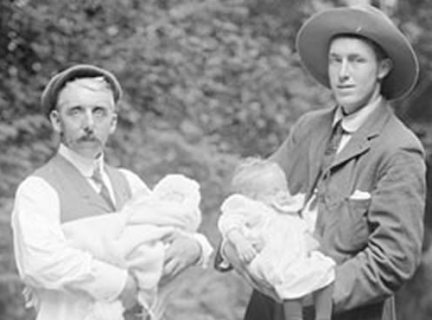Genealogy Charts

A major focus of any genealogical research project is the identification and gathering of basic details about each ancestor, such as name, and date and place of birth, marriage, death and burial.
Genealogical research often involves more than a search for names and dates. There is much more to be learned about each ancestor, including his or her reasons for immigrating to Canada, the kind of work he or she did, family and social life, and other interests and activities.
Finding out these basic details gives you a framework that helps put your broader family history into context and informs your research.
Genealogists usually record basic information on charts. Although many types of charts are used, the most common are the Ancestor Chart and the Family Group Record.
Ancestor Chart
The Ancestor Chart is one of the charts most commonly used by genealogists. Also called the pedigree chart, the Ancestor Chart is a multi-generational chart that presents information about three, four, five or even six generations.
The Ancestor Chart only shows your direct ancestors - that is, your parents, your parents' parents (grandparents), your parents' parents' parents (great-grandparents) and so on back through the generations. Aunts, uncles, cousins, brother and sisters, nieces and nephews are not included.
Print this blank Ancestor Chart and use it to begin recording your direct ancestry. Start with yourself as the primary individual.
If you have information about more than four generations, enter the next generation on another chart. Use numbers to link charts together. Spaces for recording linking numbers are usually provided on blank Ancestor Charts, including the one on this site.
Family Group Record
A Family Group Record documents information about nuclear families. (For genealogical purposes, a nuclear family is defined as a family group consisting of two married parents and their legal children). Each Family Group Record provides details about each married partner (husband and wife), together with information about each of their children.
Each direct ancestor on an Ancestor Chart appears in two Family Group Records. In the first Family Group Record, the direct ancestor is listed (with his or her siblings) in the "Children" section on his or her parents' Family Group Record. In the second Family Group Record, he or she is either the Husband or Wife.
Print this blank Family Group Sheet and use it to begin recording details about the families of each direct ancestor on your Ancestor Chart. Start with yourself and your spouse as the Husband and Wife.
Suggested Format
The following are recommended formats for entering name, date, and place information in Family Group Records:
Name
John SMITH
Date
22 November 1903
Place
New Westminster, B.C. (province only, if in Canada)
Brill, Buckinghamshire, U.K. (include country name if outside Canada)
Research Log
It is useful to keep a record of ALL the sources that you consult - even if the search was not fruitful. Otherwise, you may end up repeating a search in the future - and wasting your time. Prepare separate Research Logs for specific individuals and objectives, for example:
- Robertson, William
Objective: Determine date and place of birth
You may have several Research Logs for one individual, each with a different research objective, but try to focus on one objective at a time. When you have achieved an objective, set a new one.
Print and use this blank Research Log as a master.
Relationship Chart
As you learn more about your family history, you may identify - and in some cases come into contact with - individuals to whom you are distantly related. If you are interested in determining exactly how you are related to another person - or how any two people, living or dead, are or were related to each other - use this Relationship Chart.
To determine the relationship between two individuals:
- Identify the common direct ancestor. For example, if William Robertson is the grandfather of one person and the great-grandfather of another, he is their common ancestor.
- In the top row of the chart, find the relationship of one of the two people to the common ancestor, for example "great-grandchild".
- In the left row of the chart, find the relationship of the second person, e.g. "grandchild".
- Follow the columns down and across to where they intersect. The box at which they intersect will show you the relationship (in this case, First Cousins Once Removed).
